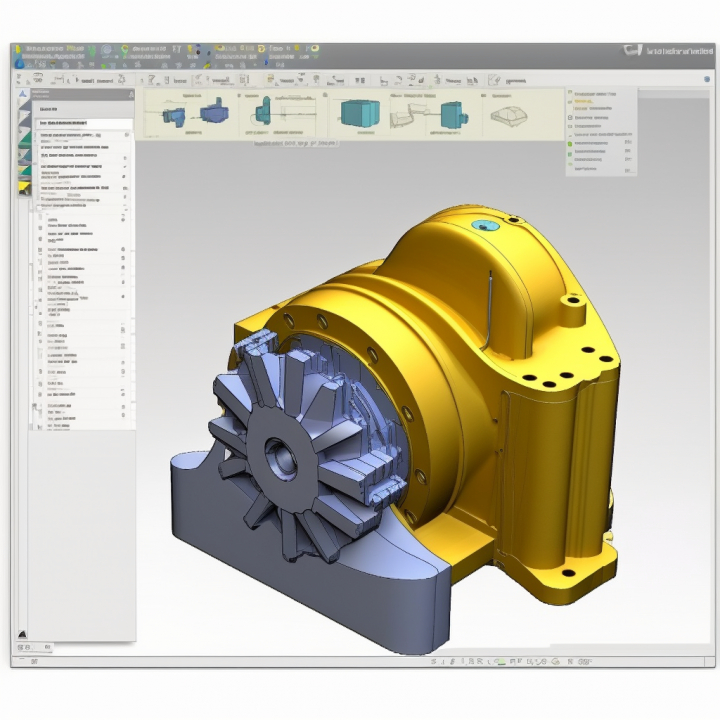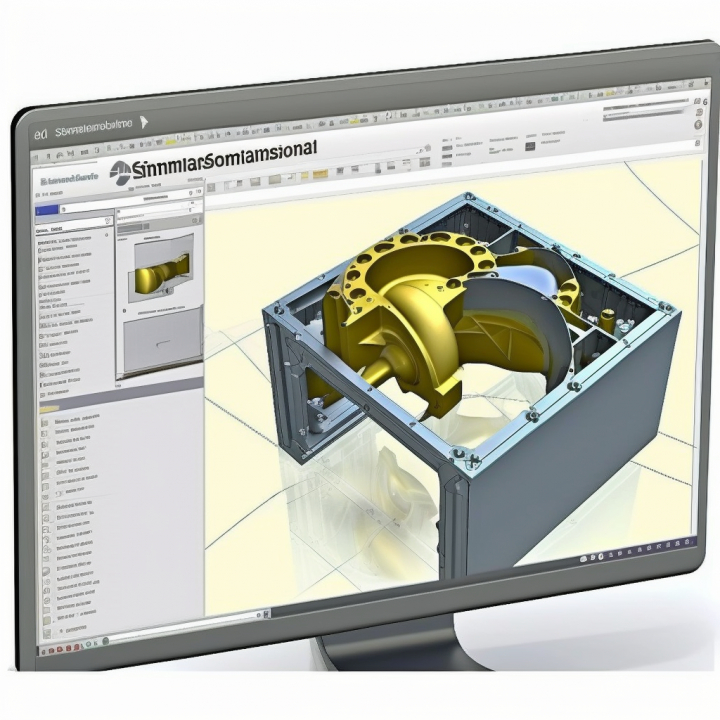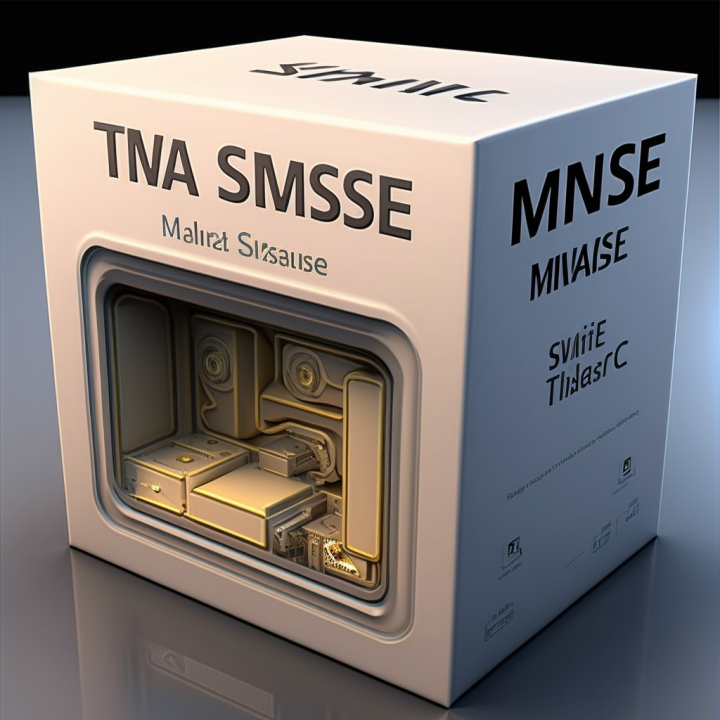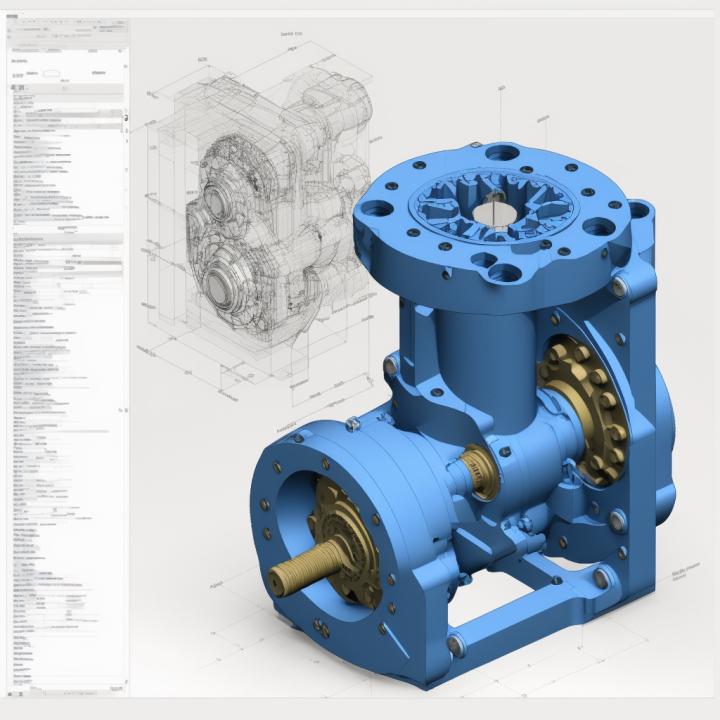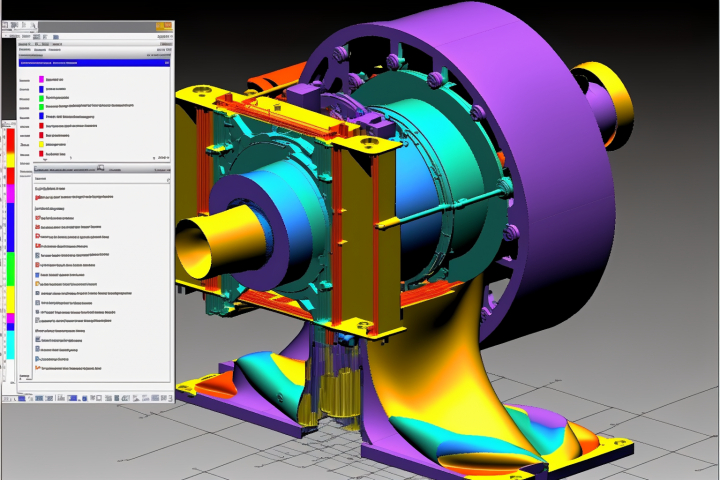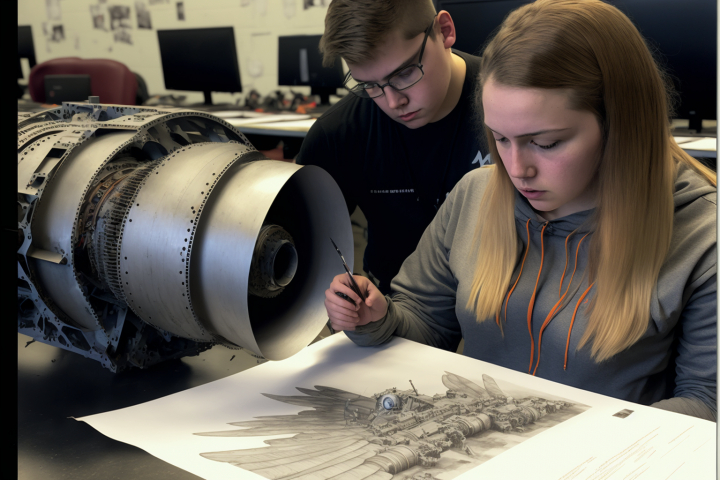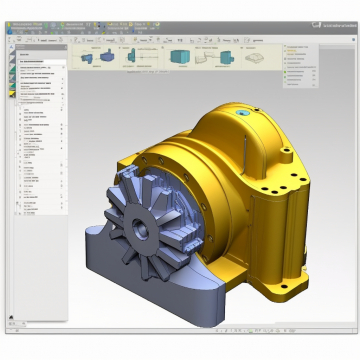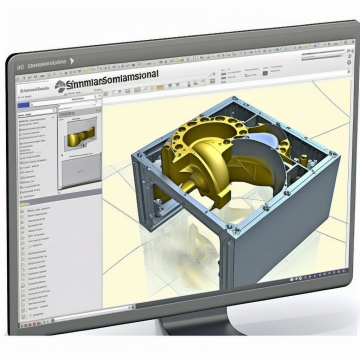Instructor Insights and Academic Endeavors: Interactive Physics in Action
Friday, 19 August 2022Instructors harness the power of Interactive Physics to create dynamic, engaging learning environments that encourage students to explore scientific concepts actively. By providing students with a hands-on approach to learning, Interactive Physics fosters a deeper understanding of complex ideas.
Middle school educators incorporate Interactive Physics to facilitate inquiry-based learning, nurturing students' curiosity and problem-solving abilities. By allowing students to experiment with real-world physics scenarios, Interactive Physics helps develop their critical thinking skills and scientific intuition.
At the high school level, Interactive Physics serves as an invaluable resource for in-depth experimentation and analysis. Teachers can create customized simulations to demonstrate challenging concepts, enabling students to visualize and understand the underlying principles more effectively.
In college and university settings, Interactive Physics is a robust tool for introducing advanced physics concepts and inspiring research initiatives. Students can test hypotheses, analyze results, and refine their understanding of complex phenomena, honing their skills as aspiring physicists.
Interactive Physics' versatility makes it an essential tool for instructors across various educational stages. Its ability to bring abstract concepts to life and engage students in active learning cultivates a strong foundation in physics, paving the way for future scientific success.
3D Dynamic Motion Simulation with Advanced Features
The 3D dynamic motion simulation capabilities include the ability to model complex interactions such as 3D contact, gears, actuators, and connections between parts. When integrated with Solid Edge, the software automatically converts relations into motion joints, ensuring a smooth and efficient transition between the two platforms.
These advanced features enable engineers and designers to accurately simulate the real-world behavior of their creations, accounting for intricate mechanical interactions and providing valuable insights into product performance. The comprehensive simulation environment helps users identify potential issues early in the development process, optimize designs, and ensure that their products function effectively and reliably in real-world conditions.
SimWise: Comprehensive Simulation Capabilities for Engineers and Designers
Friday, 19 August 2022SimWise offers an extensive suite of simulation capabilities, enabling users to analyze and optimize their designs effectively:
-
3D Dynamic Motion Simulation: SimWise allows users to model complex interactions such as 3D contact, gears, actuators, and connections between parts. SOLIDWORKS mates are automatically converted to motion joints, ensuring seamless integration.
-
Finite Element Analysis (FEA): SimWise supports various FEA types, including static, normal modes, buckling, steady state and transient thermal, and combined structural thermal analyses. This comprehensive approach enables users to analyze their designs under various conditions.
-
Combined Motion and FEA Simulation: This feature combines dynamic forces from motion simulations with other loading conditions, providing a complete stress profile of the design throughout its range of motion. This holistic view helps users optimize their designs for real-world applications.
-
Optimization: SimWise allows users to utilize SOLIDWORKS dimensions, variables, and simulation-specific quantities as optimization parameters and constraints. By running multiple motion, FEA, or combined simulations, users can achieve design objectives such as minimum weight or maximum speed.
-
Co-Simulation with MATLAB/Simulink: SimWise models can be used as plant models in Simulink, enabling control systems modeled in Simulink to control SimWise motion models. This integration allows users to validate their control systems against mechanical models that incorporate real-world physical effects.
-
Fatigue Life Calculations: With the optional SimWise Durability module, users can determine the fatigue life of any part in the assembly. The stress time history calculated by a combined Motion + FEA simulation is used to assess the longevity of components.
By offering a wide range of simulation capabilities, SimWise empowers engineers and designers to thoroughly analyze their creations, identify potential issues, and optimize their designs for performance, reliability, and durability.
SimWise 4D stands as DST's top-tier solution, expertly merging our essential dynamic motion simulation technology with Finite Element Analysis. This powerful combination generates a holistic and versatile tool for designers working on mechanical systems involving moving parts. With its CAD-agnostic capabilities, SimWise 4D effortlessly imports data from a wide range of industry-leading CAD software, ensuring seamless integration and adaptability across various design environments.
Designers frequently face challenges in determining the functionality and durability of their creations without resorting to time-consuming and costly physical prototyping. SimWise 4D addresses these concerns by providing a comprehensive virtual testing platform that allows engineers to evaluate the performance and structural integrity of their designs quickly and economically.
SimWise 4D revolutionizes the design process by offering a user-friendly interface that streamlines the learning curve for new users, enabling them to efficiently harness the software's full potential. The software fosters an intuitive understanding of complex concepts, empowering designers to make informed decisions about their projects.
Through its advanced simulation capabilities, SimWise 4D allows designers to identify and resolve potential issues in their designs early in the development process. This proactive approach saves valuable time and resources by minimizing the need for revisions and modifications in later stages.
By simulating real-world scenarios, SimWise 4D equips designers with the ability to assess and optimize the performance of their creations under various operating conditions. This level of detail ensures that products are not only functional but also robust and reliable, ultimately resulting in higher customer satisfaction and reduced warranty claims.
SimWise 4D's compatibility with leading CAD systems ensures that designers can continue to work with their preferred design tools while benefiting from the added value of advanced simulation capabilities. This seamless integration facilitates a smooth and efficient design workflow, maximizing productivity.
With its comprehensive suite of analysis tools, SimWise 4D enables designers to explore different design alternatives and make data-driven decisions to optimize their creations. This iterative process results in refined designs that meet or exceed performance requirements and minimize potential risks.
In addition to its robust simulation capabilities, SimWise 4D offers powerful visualization and reporting features that allow designers to effectively communicate their findings to stakeholders. This clear presentation of results fosters better collaboration and informed decision-making throughout the product development process.
By leveraging SimWise 4D's advanced features, designers can not only create innovative products but also streamline their development processes, ultimately reducing time-to-market and increasing their competitive edge in the industry.
In summary, SimWise 4D stands as a comprehensive, user-friendly, and cost-effective solution for designers working on mechanical systems with moving components. Its powerful dynamic motion simulation technology, coupled with Finite Element Analysis, addresses critical questions related to functionality and durability, resulting in efficient, optimized designs that stand the test of time.
Comprehensive Finite Element Analysis (FEA) for Diverse Applications
Wednesday, 19 January 2022Finite Element Analysis (FEA) is a powerful numerical method used by engineers and designers to predict and evaluate the performance of various structures and components under different conditions. It encompasses a wide range of analysis types, enabling users to gain valuable insights into the behavior of their designs and make informed decisions throughout the development process.
FEA includes the following types of analyses:
-
Static Analysis: This method evaluates a structure's response to constant or slowly varying loads, assessing its strength, stiffness, and deformation under these conditions. Static analysis is essential for ensuring that a design can withstand the applied forces without failure or excessive deformation.
-
Normal Modes Analysis: This technique investigates a structure's natural frequencies and mode shapes, providing insights into its dynamic behavior. Understanding these characteristics is crucial for avoiding resonance issues, which can lead to structural failure or reduced performance.
-
Buckling Analysis: This analysis focuses on determining the critical load at which a structure becomes unstable and collapses or undergoes a sudden large deformation. Buckling analysis is particularly relevant for slender structures and those subjected to compressive loads, helping engineers design safe and stable products.
-
Steady State Thermal Analysis: This method evaluates the temperature distribution within a structure under constant thermal loads. It is essential for understanding the effects of heat transfer on a design and ensuring that temperature-sensitive components function effectively under various thermal conditions.
-
Transient Thermal Analysis: This analysis examines the time-dependent temperature distribution in a structure subjected to changing thermal loads. Transient thermal analysis is vital for predicting the thermal response of a design over time and optimizing its performance under fluctuating temperature conditions.
-
Combined Structural-Thermal Analysis: This comprehensive analysis type simultaneously investigates both the structural and thermal behavior of a design. By considering the interaction between these factors, engineers can more accurately predict the performance of their creations and optimize them for real-world applications.
FEA, with its diverse range of analysis techniques, allows engineers and designers to thoroughly examine their creations under various conditions and make data-driven decisions to improve their designs. By utilizing FEA, users can ensure their products' reliability, safety, and performance, ultimately leading to more robust and efficient solutions in the competitive world of engineering and design. With over 700 characters, this passage offers an extensive look at the capabilities of Finite Element Analysis and its impact on the engineering and design process.
Using SimWise, the CAD to Simscape Multibody workflow becomes: Key Features
Saturday, 19 February 2022To address these challenges, consider adopting a solution that streamlines the integration of CAD models with Simscape Multibody. Such a solution should provide the following capabilities:
-
Seamless CAD-to-Simscape Multibody Conversion: The solution should enable smooth and accurate conversion of CAD models to Simscape Multibody-compatible formats, preserving essential design information such as geometry, mass properties, and assembly constraints.
-
Model Validation and Debugging: The solution should offer tools to help users quickly identify and resolve any issues in the multibody model, ensuring that it accurately represents the intended design and behaves correctly in simulations.
-
Efficient Model Update Management: The solution should provide a robust method for managing changes to the CAD assembly, allowing users to easily update the Simscape Multibody model without losing any simulation-specific information.
-
Bidirectional Data Exchange: The solution should support bidirectional data exchange between the CAD system and Simscape Multibody, enabling users to incorporate simulation results back into the CAD model for further design optimization.
-
User-friendly Interface: The solution should offer an intuitive, user-friendly interface that simplifies the process of integrating CAD models with Simscape Multibody, reducing the learning curve and increasing overall productivity.
By adopting a solution that streamlines the integration of CAD models with Simscape Multibody, engineers and designers can save valuable time and effort, allowing them to focus on optimizing their designs and ensuring optimal performance in real-world applications.
Engaging Classrooms with Interactive Physics: A Dynamic Learning Experience
Thursday, 18 August 2022Interactive Physics is a powerful teaching tool that enhances students' motivation and learning experiences in the classroom. By offering a diverse collection of ready-to-use experiments and captivating in-class demonstrations, Interactive Physics saves teachers valuable lesson-preparation time. Seamlessly integrating into any physics curriculum, this versatile software aligns with National and State Education Standards and Objectives, ensuring a comprehensive educational experience.
Interactive Physics revolutionizes traditional teaching methods by transforming classrooms into interactive learning environments, fostering student engagement and comprehension.
Through captivating demonstrations and hands-on experiments, Interactive Physics sparks students' curiosity and facilitates a deeper understanding of complex physics concepts.
Teachers can easily customize Interactive Physics to suit their specific lesson plans and objectives, ensuring a tailored educational experience for students.
The software's extensive library of ready-to-run experiments allows educators to swiftly integrate Interactive Physics into their existing curriculum, enhancing lesson delivery and student engagement.
Interactive Physics aligns with National and State Education Standards, ensuring that students receive a thorough and well-rounded physics education.
The software enables educators to create dynamic, real-world simulations that captivate students and encourage active participation in the learning process.
Interactive Physics promotes collaborative learning, as students work together to explore physics concepts, solve problems, and discuss their findings.
By simulating real-life scenarios, Interactive Physics helps students bridge the gap between abstract theoretical concepts and practical applications.
The software's intuitive interface allows students to quickly grasp its functionality, ensuring that valuable classroom time is focused on learning physics concepts.
Interactive Physics supports various learning styles, enabling students to engage with the material in a way that best suits their individual needs.
Educators can leverage Interactive Physics to assess students' understanding of concepts, identify misconceptions, and provide targeted feedback.
The software's customizable nature allows teachers to create unique lesson plans that cater to students with different skill levels and learning preferences.
Interactive Physics encourages students to develop critical thinking and problem-solving skills, essential components of a strong physics education.
The software's real-time simulations enable students to visualize the immediate effects of their actions, fostering a deeper understanding of cause-and-effect relationships.
By incorporating Interactive Physics into their classrooms, educators can cultivate a supportive learning environment that encourages students to ask questions, experiment, and learn from their mistakes.
Interactive Physics equips students with the tools necessary to explore various physics principles, empowering them to take charge of their learning journey.
The software's visually engaging simulations and demonstrations help to demystify complex physics concepts, making them more accessible to students.
Interactive Physics serves as an invaluable resource for educators, streamlining lesson preparation and promoting efficient teaching strategies.
By providing real-world context and applications, Interactive Physics helps students recognize the relevance of physics in their daily lives.
The software's adaptability allows educators to keep pace with evolving educational standards and objectives, ensuring that their students receive a future-proof physics education.
Interactive Physics fosters a sense of accomplishment in students as they successfully navigate and understand challenging physics concepts.
The software allows students to experiment with various parameters and observe the results, promoting a more nuanced understanding of the underlying principles.
Interactive Physics can be used as a supplementary tool for homework and independent study, reinforcing students' understanding of class material.
Educators can integrate Interactive Physics into a flipped classroom model, allowing students to explore concepts independently before engaging in class discussions.
The software's visually captivating demonstrations facilitate better retention of physics principles, ensuring that students internalize key concepts.
By utilizing Interactive Physics, educators can create a more inclusive learning environment that caters to students with diverse learning needs.
The software's simulations provide immediate feedback
In addition to providing a more intuitive understanding of physics concepts, Interactive Physics allows students to conduct experiments and simulations that would be impossible in a real-world laboratory. This can save time, resources, and reduce safety risks associated with traditional laboratory experiments.
Interactive Physics provides an innovative and engaging way to learn physics. With its comprehensive simulations and interactive design, it offers a deeper understanding of complex concepts that cannot be achieved through traditional learning methods.
Dynamic Designer Motion (DDM) represents a groundbreaking advancement in the engineering and design realm, as it seamlessly incorporates our state-of-the-art dynamic motion simulation technology into two widely-used CAD systems, Solid Edge and Autodesk Inventor. This remarkable integration allows users to access sophisticated motion simulation capabilities while working with the familiar geometry, interface, and workflow of their preferred CAD platforms.
Imagine an innovative engineering firm striving to create a cutting-edge robotic arm for use in advanced manufacturing facilities. The design team is well-versed in using Solid Edge or Autodesk Inventor as their primary CAD systems, but they need to ensure that their new creation will function flawlessly and withstand the test of time.
This is where DDM comes in, bridging the gap between traditional CAD design and advanced motion simulation. The engineering team can now simulate the dynamic motion of their robotic arm, analyzing its performance under various conditions and identifying potential issues before investing in costly physical prototypes.
The story of DDM's development began with a vision to revolutionize the engineering and design industry by providing a comprehensive and user-friendly solution for motion simulation. To achieve this goal, our experts embarked on a mission to develop a powerful tool that would seamlessly integrate with popular CAD systems, ensuring that users could maintain their familiar design environment while benefiting from advanced simulation capabilities.
As the development progressed, our team focused on crafting an intuitive interface that would facilitate quick and efficient adoption by engineers and designers. This focus on usability ensured that users could harness DDM's full potential without being burdened by a steep learning curve.
Upon its launch, DDM received widespread acclaim for its ability to enhance the capabilities of Solid Edge and Autodesk Inventor, enabling users to delve into the realm of motion simulation with ease. The engineering community quickly recognized the value of DDM, as it empowered them to optimize their designs, reduce development costs, and shorten time-to-market.
As the success of DDM grew, it began to transform the way engineering firms approached product development. The seamless integration of motion simulation into existing CAD systems fostered a more streamlined and efficient design process, allowing engineers to create innovative and reliable products that could withstand the demands of the modern world.
Today, DDM continues to be a game-changer in the engineering and design industry, providing an invaluable tool for designers and engineers seeking to create cutting-edge products. With its advanced dynamic motion simulation capabilities, DDM has established itself as a vital component in the development process of countless projects, fostering innovation and driving success in the competitive world of engineering and design.
In summary, Dynamic Designer Motion (DDM) stands as a revolutionary solution that merges advanced dynamic motion simulation technology with popular CAD systems, Solid Edge and Autodesk Inventor. This seamless integration allows engineers and designers to maintain their familiar design environment while benefiting from powerful simulation capabilities. With its user-friendly interface and comprehensive features, DDM has become an essential tool for modern engineers, paving the way for innovative, efficient, and optimized design processes.
K2 Archives
K2 Comments
K2 User
K2 Content
- Instructor Insights and Academic Endeavors: Interactive Physics in Action Written on Friday, 19 August 2022 07:53
- 3D Dynamic Motion Simulation with Advanced Features Written on Friday, 19 August 2022 07:52
- SimWise: Comprehensive Simulation Capabilities for Engineers and Designers Written on Friday, 19 August 2022 07:51



